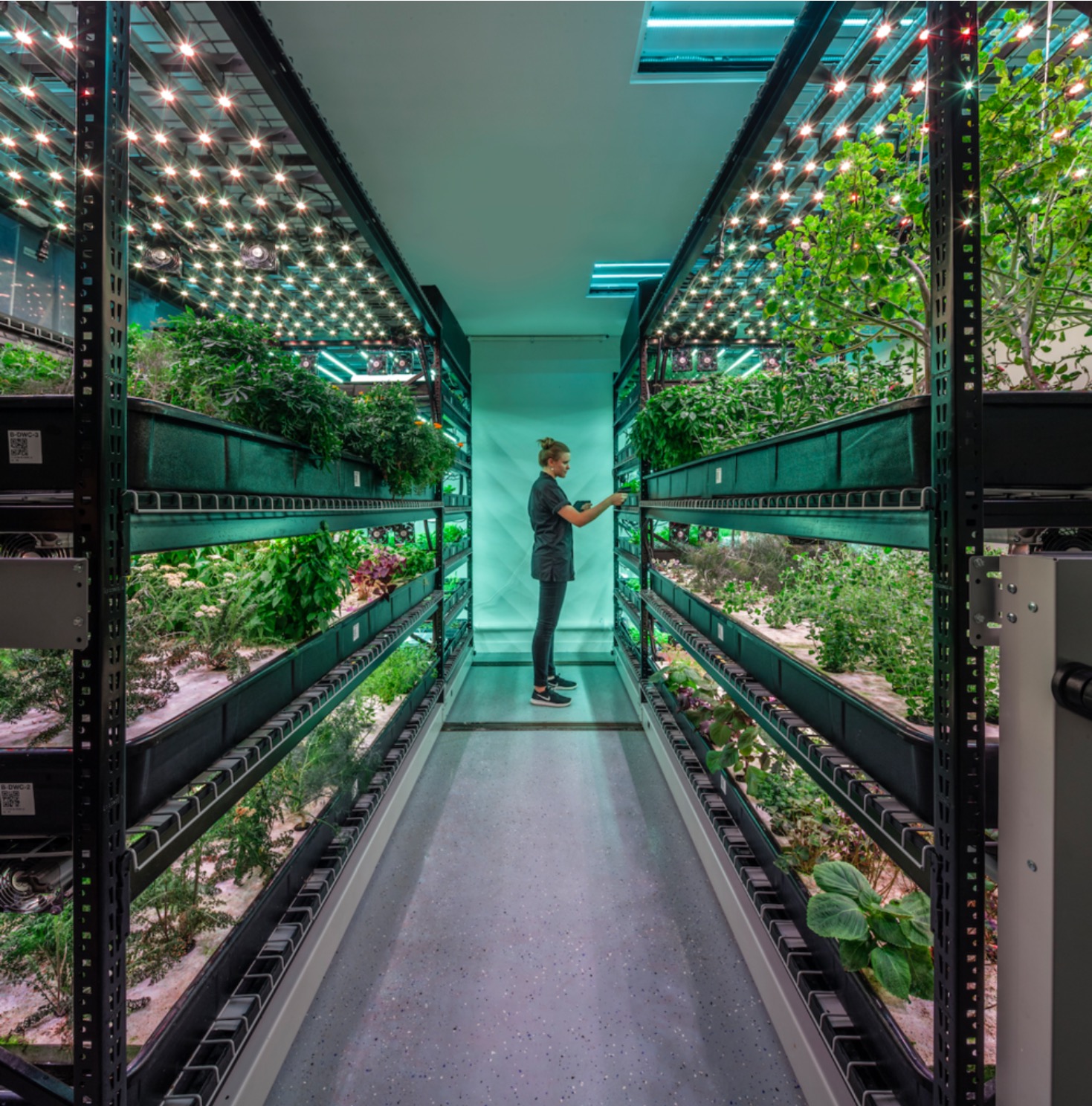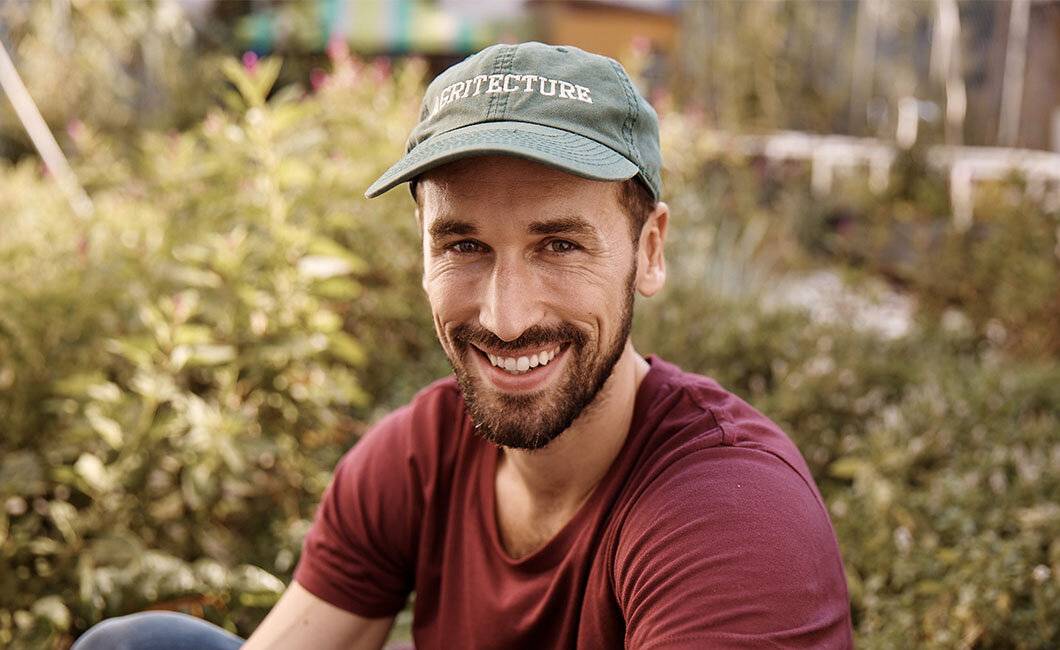
In partnership with Sustainable Urban Delta Foundation (SUD)
- Sustainable Planet -
- 5mins -
- 267 views
How cities will feed their citizens in the future
Henry Gordon Smith, CEO of global urban agriculture consultants Argitecture, explains why bringing food production into cities is so important, and how to go about it.
The future of bringing food production into cities
Between home and work or study, around 87% of our time is spent inside buildings, plus another 6% we typically spend in transportation, so the total time we spend outdoors is tiny. One entrepreneur explains why—in a phase of a changing climate and a more urbanised society—we need to bring the greenery to us in the city, and how to go about it.

Sydney, Australia. There is a growing trend for Controlled Environment Agriculture (CEA) projects in Australia due to key factors like climate change, the ability to grow independent of the seasons, and the appeal for locally grown products. Source: Agritecture
The importance of restoring how cities used to engage with agriculture
Henry Gordon Smith is CEO of global urban agriculture consultants Argitecture, and he also writes a very popular about the future of urban agriculture. Argitecture do all kinds of work across the sector, from corporate training, to entrepreneurs, and working with local governments. Their goal is to help bring more agriculture to cities.
He told Sustainable Urban Delta that the single biggest misconception about urban farming is that it can’t be commercial or profitable. When people hear “urban farming”, they tend to think of community gardens and school gardens, and they’re less likely to think high tech greenhouses, high tech vertical farms or all of the numerous ways that you can grow food in cities. What’s more, they don’t seem to think that it can be a meaningful contribution the food supply.
“I think it’s really important that we restore how cities used to engage with agriculture. When we developed cities, we would develop them near where people need the food to survive.
“And then as technology advances, the green revolution occurred, we separated agriculture from cities. We said: “farming? That’s not for cities. That’s for rural areas.” but now, because of climate change and shocks in the system: droughts, hurricanes, various issues that are affecting this global supply, even the pandemic is a shock in the system. We’ve realised: we need to bring agriculture back into cities. We need to restore it.
“I think the smart city movement, this idea of making cities more connected, more intelligent through technology, through data is really compelling and exciting. But we have to ask ourselves: can a city really be smart without agriculture?”

Source: Agritecture
Singapore Leading the world in smart city infrastructure
What about smart cities?
Being smart means thinking long term. It means thinking prepared. It means thinking how technology can maintain the current situation and strengthen it. So there’s nothing smart about a smart city plan without agriculture, says Henry.
“I don’t think that there’s one size fits all, and I think Argitecture has always been about utilising design thinking. To match the problem with the solution.
“If we look at Singapore as an example, they import 90% of their food, so they represent cities on the most extreme edge of having a food security issue. They lack space. So they also represent a city that isn’t going to be able to grow food by just planting outdoors. They’re going to need to use high technologies for that.”
How do they achieve that?
“I think that they’re doing a couple of really good steps. The first step is recognising urban agriculture. They’ve developed policy and zoning and incentives around urban agriculture that say: this is allowed to be done on top of a parking garage or allowed to be done in a vacant area. They have a grant program which is very mature, significant millions of dollars for international companies to set up pilots in Singapore as part of the grant.
“They also are investing in the talent. We need talent in the city to be able to operate these farms and to help them scale. When you’re covering talent, policy and funding, that’s when you’re leading the way in that category. And Dubai is doing some of that. Paris is doing some of that. New york is doing some of that. But I’d say Singapore has now moved into the front runner of having all of the available infrastructure needed for that.”

Farm.One — Manhattan, New York. Farm.One is an indoor vertical farm in Manhattan using hydroponic technology to grow rare culinary herbs for New York City’s finest restaurant chefs. Agritecture designed and installed Farm.One’s first facility, recruited their Head Grower, and researched rare crop species for production Source: Agritecture
Dallas: A different approach
Argitecture is working with the city of Dallas, Texas, designing the urban agriculture plan for their city. While there’s enough food in Dallas, it’s not readily accessible to those who are most vulnerable.
Would making large scale greenhouses or premium producing vertical farms make sense in the way it might make sense in Singapore?
“No. In the context of Dallas, you need more community aspects to the urban agriculture program. So low tech greenhouses on vacant lots, outdoor plots and pathways to use those access to the land.
“More farms in schools, so that students, when they’re going to school and they have food access issues,they’re getting fresh food on a daily basis from school. These are the lighter initiatives that have more of a community aspect, that are lower cost and lower on the technology spectrum.
“We have a society that’s growing up in cities. I was born in Hong Kong. I grew up in Hong Kong, in Tokyo. I did not have access to nature. And I think that I represent most of the future of society in the sense that they’re growing up in cities away from green spaces. But there’s something that we need. We need to have green space in our lives. And so if urban indoor spaces are part of our future, then we have to bring the green into these indoor spaces.
“Food is the next stage. Food is saying: ‘Ok.’ In addition to just greening the space for the psychological benefits, let’s create an output that we can consume. That’s very exciting to to bring that into cafeterias. To bring that into restaurants.”

Henry Gordon Smith has lived and traveled all over the world, but currently runs his business, Agritecture, out of Bushwick, Brooklyn. Henry and his small team help people and businesses figure out how best to farm in urban environments—from vertical gardens to hydroponic solutions. In addition, they curate an amazing blog, offer consulting services and created an online tool that helps you figure out how to build your own urban farm. Source: Agritecture
Why urban farming important
- Urban agriculture can provide the global population with at least 20% of its fresh fruit and vegetable supply. Also, it creates pathways for urban residents to engage in (now mostly rural) agriculture.
- It’s important that at least 10% of a population is engaged in agriculture.
- If 80% of our food globally is consumed by cities, then we need some city dwellers to also know how to farm!
- There are so many different ways to grow food in the city and each has its own important impact but in general, urban farming provides fresher food, improves local economies, greens our grey cities, and improves food access for those in need.
Source: Agritecture
This article was brought to you in partnership with The Sustainable Urban Delta Foundation
Sustainable Urban Delta was established to inspire megacities to make choices that open the door to healthy and sustainable urban growth. A crucial element of their approach is the production of local, healthy and fresh food. This can either be done inside cities or on undeveloped agricultural land surrounding cities, known as green belts. Sustainable Urban Delta aim to be the catalyst and the connector in order to create a better future.

